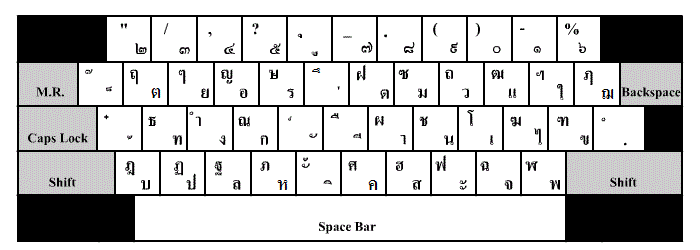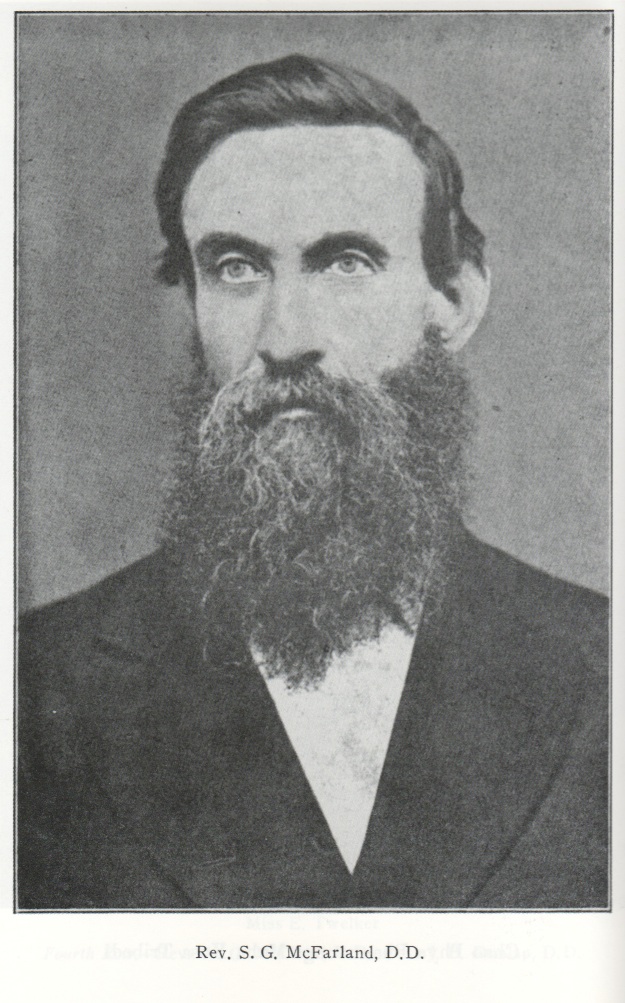|
Kedmanee Layout
The Thai Kedmanee keyboard layout () is the standard Thai language keyboard layout A keyboard layout is any specific physical, visual, or functional arrangement of the keys, legends, or key-meaning associations (respectively) of a computer keyboard, mobile phone, or other computer-controlled typographic keyboard. Standard keybo .... It originated from the Thai typewriters introduced in the 1920s to replace older seven-row designs (in turn introduced by Edwin Hunter McFarland in the 1890s), and was simply known as the traditional layout until the 1970s, when it was named after its putative designer Suwanprasert Ketmanee () in order to distinguish it from the new alternative Thai Pattachote keyboard layout. The Kedmanee layout was codified as Thai Industrial Standard 820-2531 in 1988, with an update (820-2538) in 1995, and is the default Thai computer keyboard. Reproduced in References {{reflist Thai keyboard layouts ... [...More Info...] [...Related Items...] OR: [Wikipedia] [Google] [Baidu] |
Thai Language
Thai,In or Central Thai (historically Siamese;Although "Thai" and "Central Thai" have become more common, the older term, "Siamese", is still used by linguists, especially when it is being distinguished from other Tai languages (Diller 2008:6). "Proto-Thai" is, for example, the ancestor of all of Southwestern Tai, not just Siamese (Rischel 1998). ), is a Tai language of the Kra–Dai language family spoken by the Central Thai, Mon, Lao Wiang, Phuan people in Central Thailand and the vast majority of Thai Chinese enclaves throughout the country. It is the sole official language of Thailand. Thai is the most spoken of over 60 languages of Thailand by both number of native and overall speakers. Over half of its vocabulary is derived from or borrowed from Pali, Sanskrit, Mon and Old Khmer. It is a tonal and analytic language. Thai has a complex orthography and system of relational markers. Spoken Thai, depending on standard sociolinguistic factors such as age, gender ... [...More Info...] [...Related Items...] OR: [Wikipedia] [Google] [Baidu] |
Keyboard Layout
A keyboard layout is any specific physical, visual, or functional arrangement of the keys, legends, or key-meaning associations (respectively) of a computer keyboard, mobile phone, or other computer-controlled typographic keyboard. Standard keyboard layouts vary depending on their intended writing system, language, and use case, and some hobbyists and manufacturers create non-standard layouts to match their individual preferences, or for extended functionality. is the actual positioning of keys on a keyboard. is the arrangement of the legends (labels, markings, engravings) that appear on those keys. is the arrangement of the key-meaning association or keyboard mapping, determined in software, of all the keys of a keyboard; it is this (rather than the legends) that determines the actual response to a key press. Modern computer keyboards are designed to send a scancode to the operating system (OS) when a key is pressed or released. This code reports only the key's row and column ... [...More Info...] [...Related Items...] OR: [Wikipedia] [Google] [Baidu] |
Thai Typewriter
Typewriters with the capability to print the Thai script were first developed in 1891 by Edwin Hunter McFarland, based on double-keyboard Smith Premier models. They became widely popular, especially for government use, though their production was discontinued in 1915 and newer shift-based layouts were subsequently developed by Edwin's brother George B. McFarland. The traditional keyboard layout, now known as Kedmanee, was introduced in 1931 and became the ''de facto'' standard, remaining popular even when the newer Pattachote layout, introduced in 1965, was officially endorsed by the government but failed to gain traction. The use of typewriters rapidly declined toward the end of the 20th century, when they were displaced by personal computers, though their layouts served as precursors to those of modern computer keyboards. The typewriter modified Thai typography and orthography in several ways, most significantly expediting the obsolescence of the consonants '' kho khuat'' a ... [...More Info...] [...Related Items...] OR: [Wikipedia] [Google] [Baidu] |
Edwin Hunter McFarland
Samuel Gamble McFarland (December 11, 1830 – April 26, 1897) was an American Presbyterian missionary who worked mainly in Siam (Thailand) during the latter half of the 19th century. He and his wife settled in Phetchaburi, establishing churches and a school there, and he later came into the service of the government of King Chulalongkorn (Rama V) in Bangkok, heading the Suan Anan School (one of the earliest government schools aimed at educating sons of the nobility) from 1879 until its closure in 1892, after which he wrote Thai textbooks for the Department of Education. He most notably compiled an English–Thai dictionary which became the first widely used dictionary for Thai learners of English. Biography Samuel G. McFarland was born on December 11, 1830, in Smith Township, Washington County, Pennsylvania to William and Mary McFarland. He graduated from Washington College in the class of 1857, and was ordained as a minister by the Presbytery of Washington in 1860. He married h ... [...More Info...] [...Related Items...] OR: [Wikipedia] [Google] [Baidu] |

